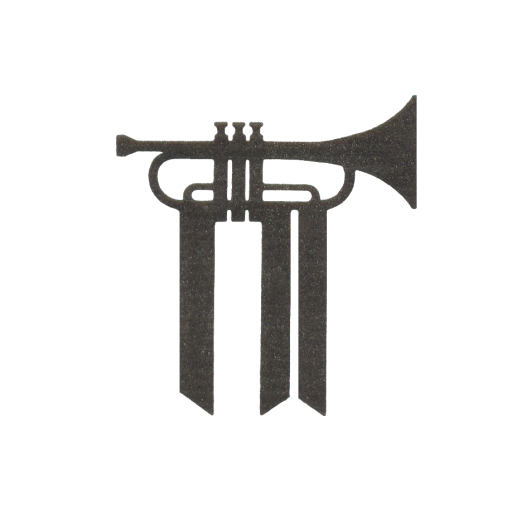Beautiful virtual music-making
The first recording is a mix of well known and quaint bits of music and easy listening.
Moonlight Sonatais the popular name for the Piano Sonata No. 14 in C-sharp minor “Quasi una fantasia”, Op. 27, No. 2 by Ludwig van Beethoven.
Beethoven dedicated the work to Countess Giulietta Guicciardi, a 16-year-old aristocrat who was his student for a short time. What is unusual about this sonata is the tempo choices. Usually sonatas are fast-slow-fast, with the slow movement sandwiched in the middle. The first and last movement are almost always quite brisk. But Beethoven goes slow-medium-fast in this sonata, which was really unusual, and a testament to his rule-breaking.
The piece is admired particularly for its mysterious, gently arpeggiated, and seemingly improvised first movement. The piece was completed in 1801, published the following year, and premiered by the composer himself, whose hearing was still adequate but already deteriorating at the time. The nickname
Moonlight Sonata traces to the 1830s, when German Romantic poet Ludwig Rellstab published a review in which he likened the first movement of the piece to a boat floating in the moonlight on Switzerland’s Lake Lucerne.The Moonlight Sonata was structurally and stylistically remarkable in its day. Most sonatas of the late 17th and early 18th centuries consisted of a reasonably animated, thematically well-defined first movement, a more-subdued second movement, and a vibrant final movement. The Moonlight, by contrast, offered a dreamy first movement, a somewhat more lively second movement, and a final movement that was outright tempestuous. Such was the furor of the Moonlight’s finale that several of the piano strings snapped and became entangled in the hammers during the work’s premiere. Indeed, in the declining years of his hearing, Beethoven was known to play with a heavy hand, likely so that he could better hear the music.
Tarantella by A Peckzonka =- Albert Emil Theodor Pieczonka(February 10, 1828 – April 12, 1912) was a composer, pianistand music instructor who resided in Germany, England, and the United States. His most famous work, the “Tarantella in A Minor”, remains a popular piano standard more than 100 years after his death.
Albert Pieczonka was born in Königsberg on the Baltic coast of East Prussia. Today, this city, which was heavily damaged during the Second World War, is named Kaliningrad. It lies within the Kaliningrad Oblast, the westernmost exclave of Russia.
Pieczonka was the youngest of three children born to Gotthilf Immanuel (1801-1872) and Friederike Caroline Dorothea (Rehlander) Pieczonka (1803-1853). He briefly attended the University of Königsberg before enrolling in the Leipzig Conservatory in 1847. This institution, the oldest music university in Germany, was founded by composer Felix Mendelssohn in 1843. While at the conservatory, Pieczonka studied under famed pianist Ignaz Moscheles (1794-1870). He may have also studied under Franz Liszt before undertaking a solo career.
In 1858, or thereabout, the Pieczonka family emigrated from continental Europe to London, England. In England, Pieczonka performed concerts and gave music lessons to children of the wealthy. It was in England that he composed several of his most recognized pieces including Dancing Waves, Polish Chivalry, and the Tarantella in A Minor.
In September 1880, Pieczonka emigrated to the United States.[1] He arrived in New York on The Queen, a three masted steamer of the British National Line. The family eventually settled on the upper east side of Manhattan at 169 East 95th Street. During the 1880s, Pieczonka, his wife, and his daughters performed together throughout the United States as the Kempa Ladies’ Orchestra. Pieczonka also gave solo concerts at venues such as Carnegie Hall in New York and the Great Auditorium at Ocean Grove, New Jersey. His performances consistently garnered favorable reviews from the press. He continued to write music and to give music lessons until shortly before his death.
In 1855, Pieczonka married one of his students, Nancy “Nanny” Wohlgeboren (1836-1916). The couple had eight children, one of whom died as an infant. Two of the children, Ernst (1857-1877) and Fanny (1858-1886), were born in East Prussia. Alice (1859-1908), Kathe (1860-1938), Emily (1861-1915), Helen (1864-1896), Hans (1866-1867), and Eva (1867-1908), were born in London, England. Son, Ernst, was partially paralyzed as the result of a fall during childhood and died in England about 1876. Pieczonka’s daughters’ lives were also marked by tragedy and were cut short by illness and accident. He outlived all but two of his children.
Pieczonka died of pneumonia in his Manhattan home on April 12, 1912. He was survived by his wife and two daughters. His widow, Nancy, died on November 18, 1916. Following Pieczonka’s death, a blurb appeared in the monthly music magazine Etude:
“Albert Pieconka, the pianist-teacher-composer who died recently in his eighty fifth year, bore a remarkable facial resemblace to Beethoven. He studied at the University of Konigsberg and also at Leipzig Conservatory, after which he made a series of concert tours in German. His success in London won him the friendship of such men as Liszt and Rubinstein. In America he was more particularly engaged in teaching and composing. His best known work is his Tarantella.”
Debussy’s Doctor Gradus ad parnassum –
Children’s Corner, L. 113, is a six-movement suite for solo piano by Claude Debussy. It was published by Durand in 1908, and was first performed by Harold Bauer in Paris on 18 December that year. In 1911, an orchestration by André Caplet was premiered and subsequently published.
Debussy composed Children’s Corner between 1906 and 1908. He dedicated the suite to his daughter, Claude-Emma (known as “Chou-Chou”), was born on 30 October 1905 in Paris. She is described as a lively and friendly child who was adored by her father. She was three years old when he dedicated the suite to her in 1908. The dedication reads: “A ma chère petite Chouchou, avec les tendres excuses de son Père pour ce qui va suivre. C. D.” (To my dear little Chouchou, with tender apologies from her father for what follows).
The suite was published by Durand in 1908, and was given its world première in Paris by Harold Bauer on 18 December that year. In 1911, an orchestration of the work by Debussy’s friend André Caplet received its premiere, and was subsequently published.
Doctor Gradus ad Parnassum
The title of the first movement alludes to sets of piano exercises of that name (Gradus ad Parnassum translates as “Steps to Parnassus“), several of which had been published in the eighteenth and nineteenth centuries, including one by the prolific publisher of piano exercises Carl Czerny. This piece is a rather ingenious study in finger independence with a twentieth century vocabulary. In the middle, the pianist slows down and tries the material in other keys for exercise. Debussy’s “Doctor Gradus Ad Parnassum” is of intermediate difficulty and requires experienced fingers. Debussy told his publisher that the movement should be played “very early in the morning”.





